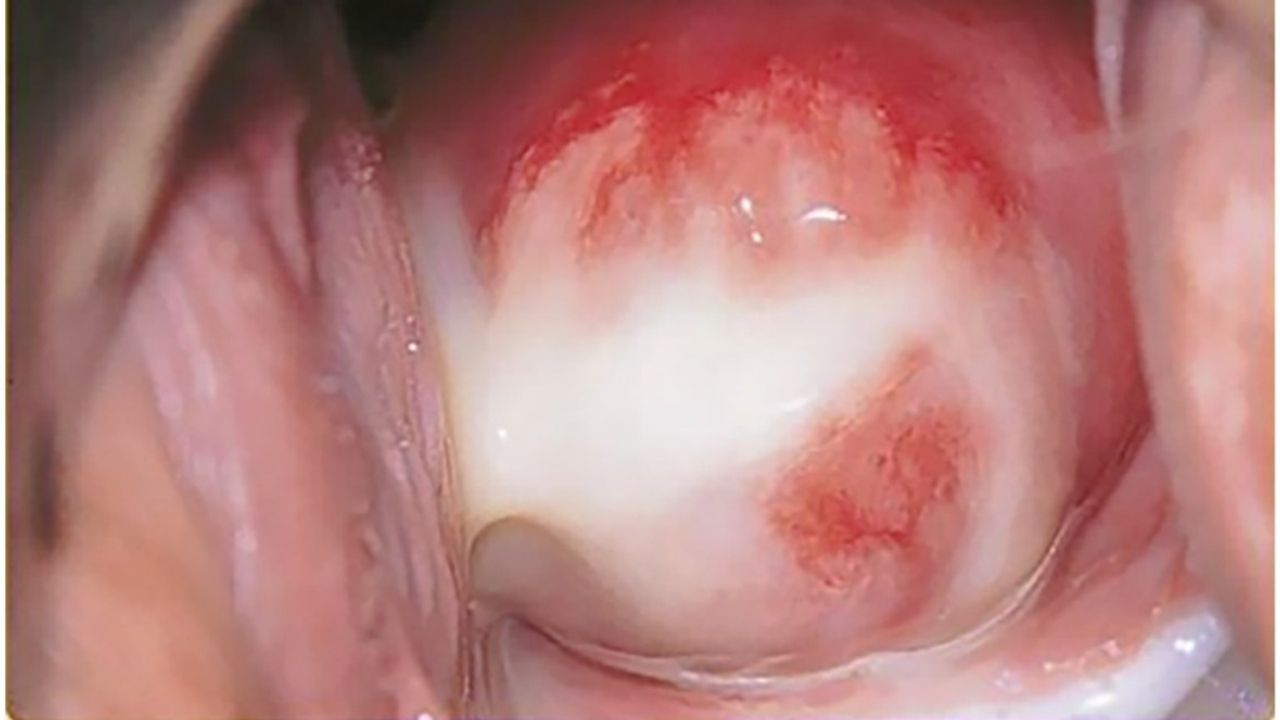The Chlamydial infection is the most common sexually transmitted diseases in the world. It is mostly caused by the bacterial species Chlamydia trachomatis. Early diagnosis and subsequent treatment can prevent permanent damage such as infertility.
ICD codes for this disease: A56, A74


Some of the most common symptoms of chalymidia include burning during urination, yellow or green vaginal or penile discharge, abdominal pain, and pain during intercourse.
Frequency of chlamydial infections
Depending on the age group, up to ten percent of the population worldwide are infected with chlamydia. Women and men can equally be affected by a chlamydial infection and can be carriers of the bacteria.
For anatomical reasons, however, young girls and women are particularly at risk of contracting chlamydia through unprotected sexual intercourse, as the cervix can be infected particularly easily.
According to World health organisation (WHO), It is estimated that around 374 million people develop a new infections with 1 of 4 STIs: chlamydia, gonorrhoea, syphilis and trichomoniasis every year worldwide.
Causes of chlamydia infection
The causative agents of the chlamydia infection are the so-called chlamydia. These bacteria multiply in the human body cells and cause different diseases depending on the subgroup.
The most common pathogen is a bacterium called Chlamydia trachomatis. This bacterium usually causes diseases in the genital area and inflammation of the eye, which can lead to blindness.
Chlamydia pneumoniae and Chlamydia psittaci are further Chlamydia subgroups. Chlamydia pneumoniae can cause inflammation of the bronchi and sinuses and pneumonia. Chlamydia psittaci is responsible for the very rare, severe pneumonia-like parrot disease.

Chlamydia is usually transmitted from one infected person to another through unprotected sexual intercourse. The risk of chlamydia infection is therefore particularly high in people with frequently changing sexual partners who do not use a condom during sexual intercourse.
In addition, it is also possible for an infected, pregnant woman to pass the chlamydia on to her newborn child during childbirth.
Symptoms of chlamydia infection
Chlamydia are bacteria that can cause different clinical pictures with different symptoms. The best known and by far the most common chlamydial infection affects the urinary and reproductive organs (urogenital chlamydial infection). This sexually transmitted venereal disease caused by chlamydia can affect men and women alike.
In addition, certain chlamydiae affect the eyes, lungs and, in severe cases, other organs.
There are three types of chlamydia that can cause disease in humans:
- Chlamydia trachomatis
- Chlamydia (Chlamydophila) psittaci
- Chlamydia (Chlamdyophila) pneumoniae
The first symptoms of a chlamydial infection appear around 7 to 21 days after infection. Usually it is:
- itching
- Pain and burning sensation when urinating
- purulent discharge in the genital area
Often, however, there are no noticeable symptoms at first. This is why chlamydial infections are often not recognized or treated. Nevertheless, those affected can unwittingly transmit the pathogen to their sexual partners.
If the disease is dragged on, severe inflammation and infertility can ensue.
Consequences of chlamydial disease in men
Often the urethra, prostate, and epididymis become inflamed in infected men. A strong urge to urinate and pulling pains in the urethra are signs of such inflammation and must be treated to prevent impending infertility.
Consequences of infection in women
In women, a chlamydial infection can lead to purulent inflammation of the uterine lining, ovaries and fallopian tubes. The affected person then suffers from fever, diarrhea and severe abdominal pain.
If the chlamydial infection is left untreated, the inflammation can cause scarring and sticking of the fallopian tubes, which can lead to infertility and a high risk of ectopic pregnancy. It is estimated that around 100,000 women in Germany are sterile due to a chlamydial infection.
If pregnant women become infected with chlamydia, the risk of premature amniotic sac rupture or premature or miscarriage increases. They can also infect their newborn children with chlamydia during childbirth.
Diagnosis of chlamydial infection

To diagnose a chlamydial infection, the doctor takes a smear and a urine sample as part of a physical examination , which he then has in the laboratory.
Laboratory examination of urine samples and swab material
If antibodies against chlamydia or particles of the chlamydial genetic material can be detected in the urine and cell swab, there is a high probability that a chlamydial infection is present. With the help of other special laboratory and molecular biological examinations, such as the cultivation of cell cultures, the diagnosis of a chlamydial infection can then be confirmed.
Alternative: anonymous rapid chlamydia test
Chlamydia infection is a very intimate affair. If you’re shy about going to the doctor, an anonymous rapid test can be done. Make sure that you choose a provider who professionally analyzes the test strip in a certified laboratory. Pure “home tests” are often unreliable.
Therapy of a chlamydial infection
The treatment of chlamydia infection is usually through the group of the antibiotics, macrolides, tetracyclines, doxycycline or azithromycin. Pregnant women with a chlamydial infection are usually treated with the antibiotics erythromycin, amoxicillin or josamycin. Depending on the preparation, those affected have to take the antibiotic once or over a period of up to two weeks.
Until the antibiotic treatment stops, the patient should also refrain from sexual intercourse for at least a week in order not to infect his partner. Nevertheless, the partner should also have himself examined because he may already be infected and the infection can spread again.
As a check, three weeks after the end of antibiotic therapy, a laboratory test should be carried out to ensure that the treatment of the chlamydial infection was actually successful.
Treatment of chlamydia infection
Chlamydia infection is treated with antibiotics. Most often it is used in the doxycycline. This representative of the tetracyclines blocks the growth of chlamydia. Other antibiotics that are used in chlamydia treatment include azithromycin, erythromycin and ofloxacin.
The choice of chlamydial antibiotics and their dosage depend, among other things, on the clinical picture (trachoma, urogenital infection, etc.). For women, it also takes into account whether they are pregnant or breastfeeding. In addition, the doctor pays attention to possible additional infections when planning therapy. Other pathogens can also spread on the mucous membranes inflamed by chlamydia.
Treatment of Chlamydia trachomatis infections
The chlamydia treatment for this type of pathogen is mainly based on the clinical picture.
Anyone infected with chlamydia but showing no symptoms is usually given doxycycline: The infected person has to take 100 milligrams of the antibiotic twice a day for seven days. Alternatively, a single dose of 1.5 grams of azithromycin can be prescribed. This can be useful, for example, in patients who would not reliably take doxycycline for a week.
Chlamydia treatment for urogenital inflammation
Acute urethritis caused by chlamydia is also the preferred treatment for men and non-pregnant women with doxycycline (100 milligrams twice a day for seven days). Also an acute inflammation of the prostate and cervix caused by chlamydia are usually treated with this therapy scheme.
In men, this chlamydia treatment can be extended to 14 days if the inflammation affects the seminal vesicles or epididymis has spread.
If the inflammation has spread to fallopian tubes and / or ovaries in women, there is a ” pelvic inflammatory disease ” (PID) is present. Here the your doctor (gynecologist) may prescribe a combined chlamydia therapy consisting of several antibiotics such as doxycycline, ceftriaxone metronidazole, etc. The duration of treatment is one to two weeks, depending on the course of the disease.
In all urogenital chlamydial infections, the sexual partner must also be treated. This prevents couples from repeatedly infecting each other with chlamydia.
Chlamydia treatment for lymphogranuloma venereum
The chlamydial venereal disease is also mostly treated with doxycycline. Patients must take 100 milligrams of the antibiotic twice a day for 21 days.
Here the your doctor (gynecologist) may prescribe you alternative. Which is chlamydia therapy with erythromycin (over 14 days) or azithromycin (once). However, these antibiotics are considered to be the second choice.
Chlamydia treatment during pregnancy and breastfeeding
If pregnant or breastfeeding women suffer from genital chlamydial infection, the doctor prefers to prescribe azithromycin: the patient has to take a single dose of the antibiotic.
Alternatively, your doctor (gynecologist) may prescribe chlamydia therapy with erythromycin. This antibiotic must be taken for one to two weeks, depending on the dose.
The sexual partner patient’s must also be examined and treated for chlamydia.
Chlamydia treatment in newborns
Babies who contract Chlamydia trachomatis from their infected mother during birth are usually treated with erythromycin. The antibiotic is given over 14 days.
Alternatively, chlamydia treatment in newborns can also be done with azithromycin. Sometimes a single dose is enough here. In other cases, the antibiotic is given for 3 days.
Chlamydia treatment for inflammation of the throat or rectum
The chlamydia therapy of choice for inflammation of the rectum (proctitis) or inflammation of the throat (pharyngitis) is doxycycline: 100 milligrams of the antibiotic must be taken twice a day for seven days. Alternatively, the antibiotic azithromycin can be given.
If the patients contract the venereal disease gonorrhea at the same time suffer from , the doctor chooses a combination therapy: He prescribes the two antibiotics ceftriaxone and azithromycin.
Chlamydia treatment for eye infections
Chronic conjunctivitis and corneal inflammation caused by serovars A to C of Chlamydia trachomatis is called a trachoma. Chlamydia therapy usually consists of a single intake of 1.5 grams of azithromycin. Alternatively, the antibiotic can also be applied locally according doctor prescription (e.g. as an ointment) over several days.
A conjunctivitis by the chlamydial serovars D to K azithromycin may also be treated with a single dose of 1.5 grams. But there are also other options for chlamydia therapy: The doctor can, for example, prescribe a lower dose of azithromycin or doxycycline. The intake must then take place over several days. Alternatively, as with trachoma, local (topical) azithromycin can be treated.
Chlamydia treatment for other pathogens
Chlamydia treatment for an infection with Chlamydia psittaci or Chlamydia pneumoniae generally consists of doxycycline: patients must take the antibiotic for ten to 21 days.
Alternatively, other antibiotics can be prescribed. These include, for example, azithromycin or erythromycin.
By the way: Acute infections with Chlamydia psittaci must be reported.
Prognosis and chances of a cure for chlamydial infection
If the chlamydial infection is discovered in good time and treated with antibiotics, the prognosis is usually very good. The chlamydial infection then usually heals without leaving any permanent damage.
Consequential damage such as infertility can only occur if the infection is left untreated or treated too late.
